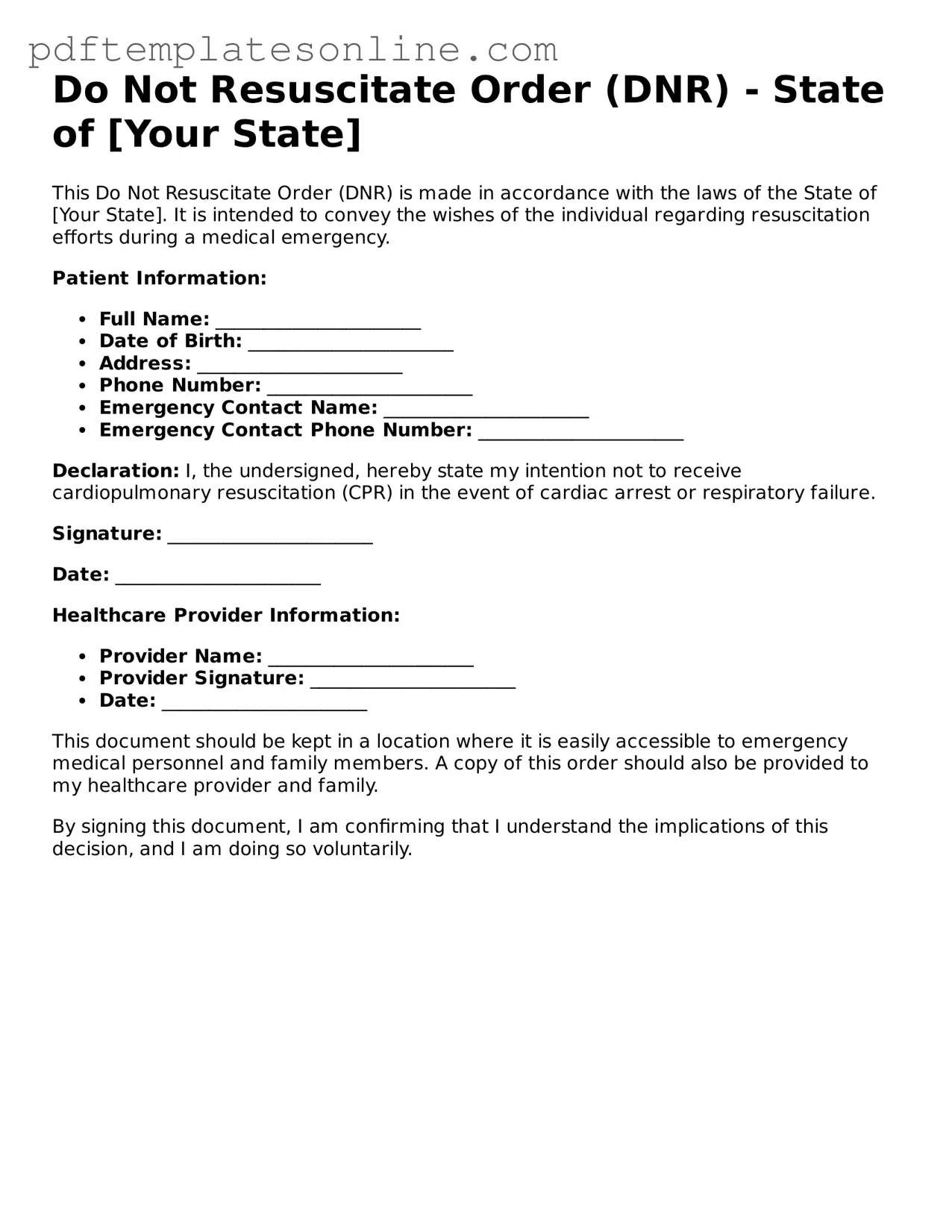Filling out a Do Not Resuscitate (DNR) Order form is a critical step for many individuals and their families. However, mistakes can occur during this process, leading to confusion and unintended consequences. One common mistake is not discussing the decision with family members or healthcare providers. Open communication ensures that everyone understands the individual’s wishes, reducing the chances of conflict during a medical emergency.
Another frequent error is failing to provide specific details about the individual's medical condition. A DNR form should clearly reflect the person's health status and preferences. Without this information, medical staff may struggle to interpret the wishes correctly. Additionally, some people overlook the importance of signing and dating the form. An unsigned or undated document may be deemed invalid, which can lead to unwanted resuscitation efforts.
Many individuals also neglect to review their DNR orders regularly. Health situations can change, and so can personal preferences. A DNR order that was appropriate a year ago may not reflect current wishes. It is essential to revisit and update the form as necessary. Furthermore, individuals sometimes fail to provide copies of the DNR order to relevant parties. Healthcare providers, family members, and even local hospitals should have access to the document to ensure that it is honored.
Some people mistakenly assume that a DNR order applies in all situations. However, it is crucial to understand that a DNR typically applies only to specific circumstances, such as cardiac arrest. In other medical emergencies, different protocols may be followed. Misunderstanding this can lead to complications during critical moments.
Additionally, individuals may not realize that a DNR order must be completed in accordance with state laws. Each state has its own requirements and forms, which can vary significantly. Using the wrong form or not adhering to state guidelines can invalidate the order. Lastly, some people may feel pressured to fill out a DNR order without fully understanding its implications. It is vital to take the time to reflect on this decision and seek guidance if needed.
